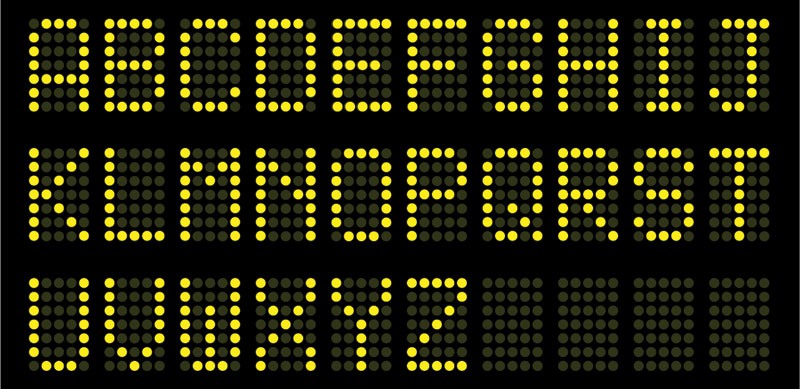
For centuries, typography has been the publisher’s domain. With the
advent of digital technology in the late 1980s, typography was able to
break through the traditional boundaries of the printing world and
become omnipresent in everyday life. Type was no longer confined to the
typesetting shops and reached into the mainstream and the hands of the
general public.
The personal computer has increased everybody’s awareness of typography and allowed the user to be his own typesetter, even generating his own fonts. In 1990, Roger Black, speaking at the Type 90 conference, predicted that “by the end of the decade, everyone will have their favourite typeface.” While he may have been right, knowing how to use it correctly is another matter.
The graphic art industry has been transformed by digital technology, placing production tools into the hands of professionals and non-professionals alike. Designers are now able to tackle all the disciplines of the design and production process. One individual can be the designer, copywriter, illustrator, photographer and typesetter, bringing together a multiple of previously isolated disciplines into one medium. The Internet, in more recent years, has extended the platform for communication, and ‘developer’ can now be included in the skills set.
While the advantages brought to the creative process by this technology are plentiful, many designers and typographers feel this democratisation of typography has led to an erosion of traditional ‘craft’ standards. We now live in a society swimming in typography of varying standards. Visual stimulation is all around us and we cannot ‘unsee’ what we have seen. Without the typesetter, there is no longer an expert on the subject between the designer’s visual and the printed or on-screen page, to sift out the mistakes and improve on them.
The fundamentals of typography are no longer considered an essential component of today’s design education. This has led to many designers/communicators entering the commercial world with little or no grounding in the basics of good typography. Typography, like so many other crafts, is in danger of being forgotten. Yet it is the one craft that can bring some clarity to our increasingly complex world.
“Letterforms surround us in our daily lives, they permeate every aspect of the visual environment and play an essential role in the information-hungry society. The way in which we are presented with information can substantially affect how we absorb it; thought and meaning are diluted by poor arrangement of forms on the page, and are similarly clarified, reinforced and elevated by skilful composition. Typography is the point where content and form meet – good typography is the successful union of the two.” 1
These were the principles by which typography was judged for hundreds of years before the advent of digital technology. Surely these are the principles that will maintain the standards of typography for future generations?
A personal bugbear and dead giveaway for poor typography is the incorrect use of quotation marks and apostrophes. Television viewing is often spoilt by the lack of attention shown to their craft by the caption makers at the BBC. And a visit to the BBC website extends this disappointment, too. The BBC is not alone and, of course, there is much more to good typography than the correct use of apostrophes.
So if you don’t know your muttons from your nuts, or you’re guilty of creating widows and orphans, some further reading is recommended. Thefontshop.com blog is an excellent source of front news, views and how to use and it's education library is well stocked with downloadable resources.
If you’d prefer to give your square eyes a break and opt for some offline reading, there are numerous books available to increase knowledge of the subject for even the most experienced typographer, including Jim Williams’ excellent ‘Type Matters! – Simple tips for everyday typography.’
Typography and design are complex subjects, with new technology expanding the boundaries of their implementation almost daily. They continue to mirror the accumulated experiences of our lives, while bringing a sense of order and identity to the visual chaos of our surroundings. Throughout history, communication has developed coevally and symbiotically with the technology of the day, extending our means of expression initially through mimicking its predecessors until unique capabilities of the new technology are explored and absorbed. The task for the future is to maintain, if not improve, the standards of typography that will reflect the progress in society through the new technology that is created.
1 Octavo; Issue1, 1986.





